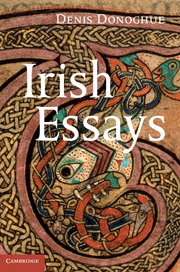2 - Reading Gulliver's Travels
Published online by Cambridge University Press: 05 June 2012
Summary
Houses of decay, mine, his and all. You told the Clongowes gentry you had an uncle a judge and an uncle a general in the army. Come out of them, Stephen. Beauty is not there. Nor in the stagnant bay of Marsh's library where you read the fading prophecies of Joachim Abbas. For whom? The hundredheaded rabble of the cathedral close. A hater of his kind ran from them to the wood of madness, his mane foaming in the moon, his eyeballs stars. Houyhnhnm, horsenostrilled. The oval equine faces, Temple, Buck Mulligan, Foxy Campbell, Lanternjaws. Abbas father, furious dean, what offence laid fire to their brains? Paff! Descende, calve, ut ne amplius decalveris.
On October 28, 1726, the London printer Benjamin Motte issued the first volume of Travels into Several Remote Nations of the World by Lemuel Gulliver, “first a surgeon, and then a captain of several ships.” A few readers knew that the real author was Jonathan Swift, Dean of St. Patrick's Cathedral – “the cathedral close” – in Dublin. Presumably they took the book as a squib thrown off from the Dean's official life, or a satire on those in power in London who had banished him to Dublin in 1714. The book was an immediate success: two further editions were required in 1726 and two more in 1727. John Gay wrote to Swift on November 17, 1726 to report that “from the highest to the lowest it is universally read, from the cabinet-council to the nursery.”
- Type
- Chapter
- Information
- Irish Essays , pp. 37 - 58Publisher: Cambridge University PressPrint publication year: 2011



